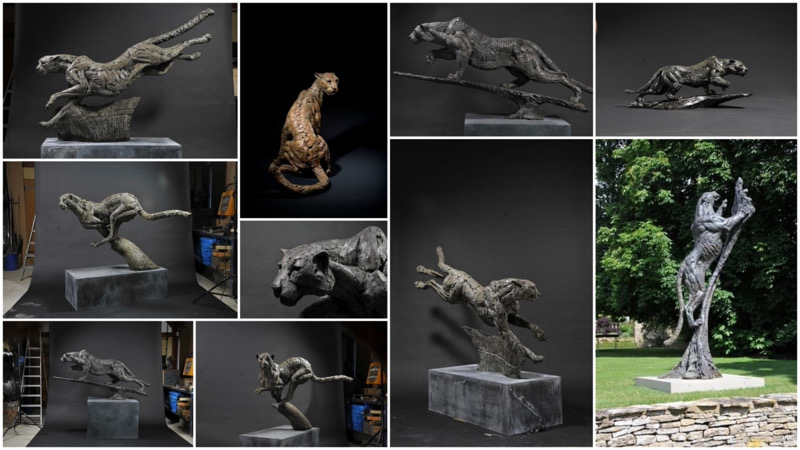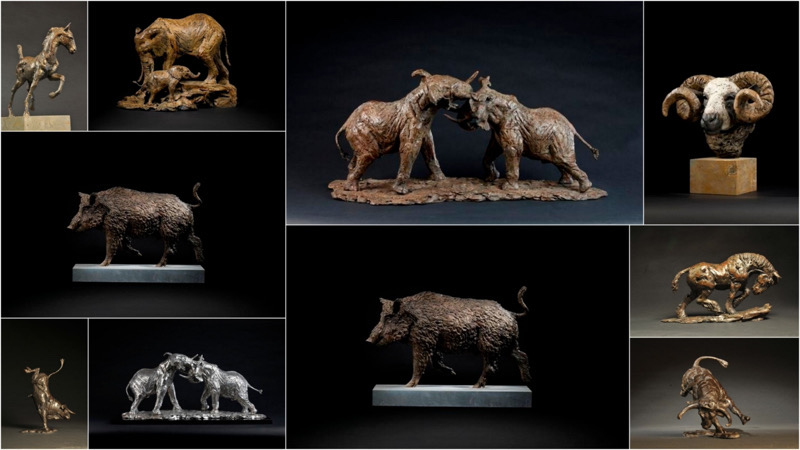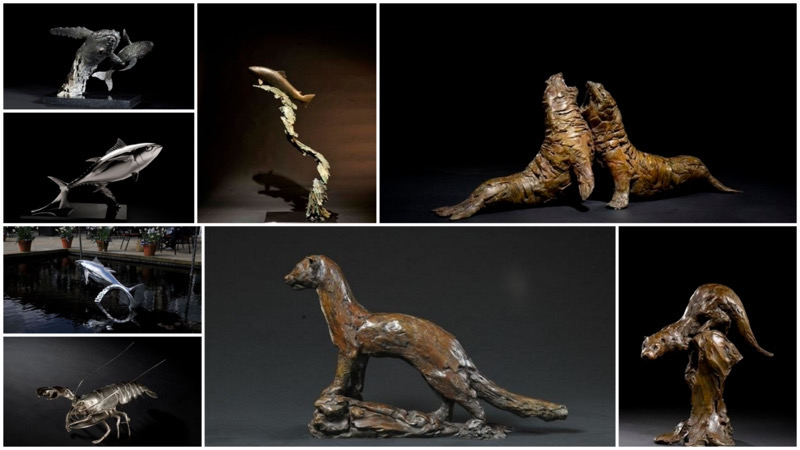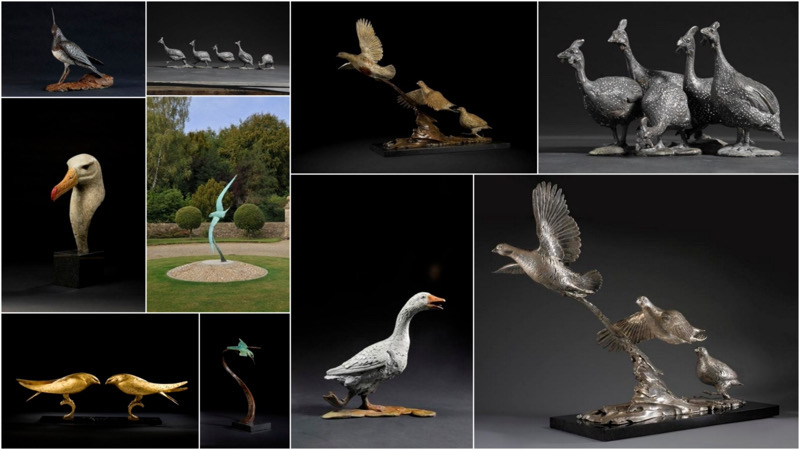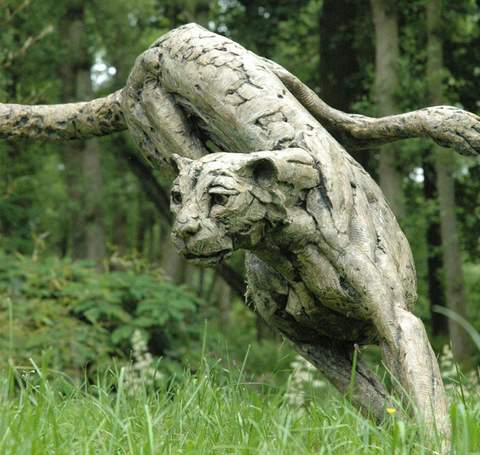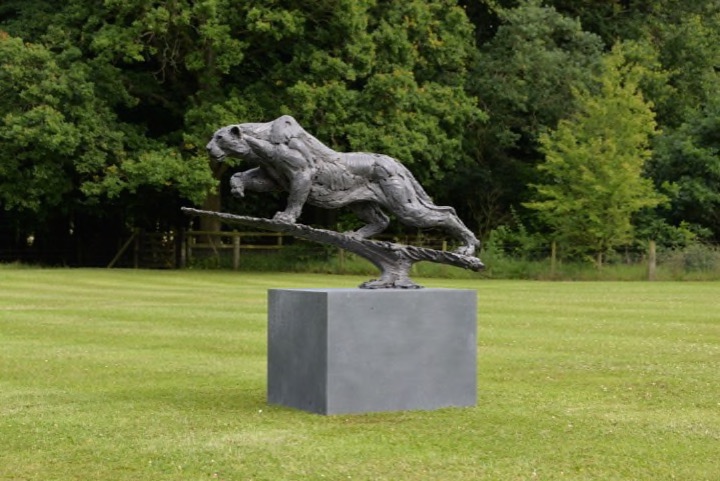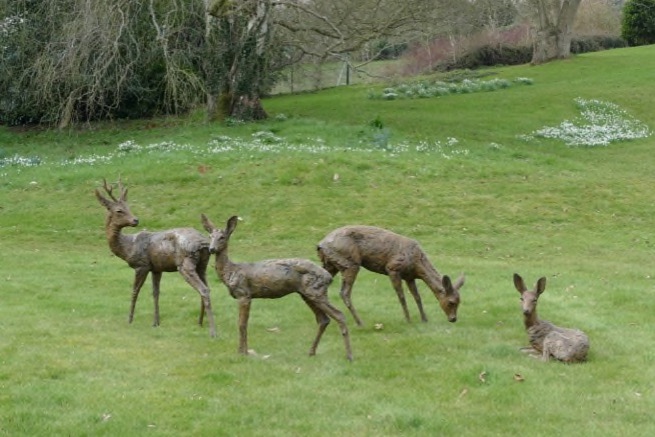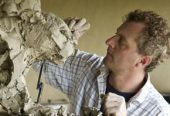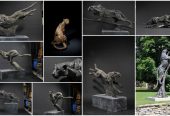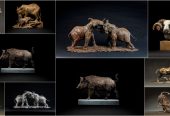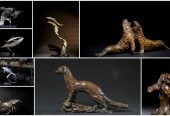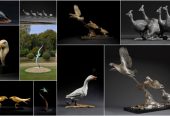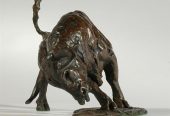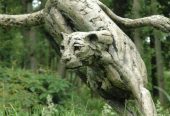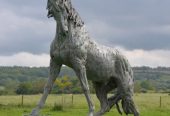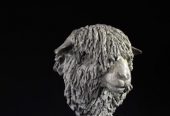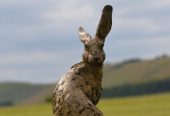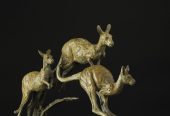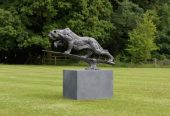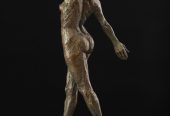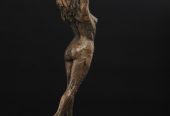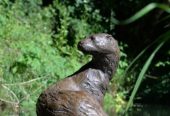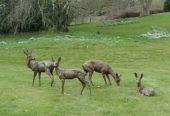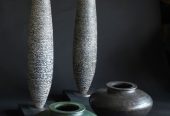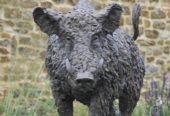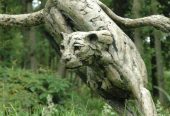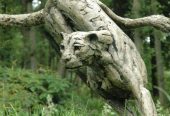Hamish Mackie – About Me And What I Do
Description
About Hamish Mackie
Through his work as a sculptor Hamish Mackie has had the privilege of observing wildlife in many corners of the world at first hand, thus bringing his passion for the natural world into his sculptures. Largely self-taught, Hamish’s style is unique; his work captures the inner core, strength, and grace of the subject. His sculptures are his own interpretation, and not a photographic representation of the subject, through his close observation and his expressive manipulation of the materials Hamish is able to capture an instinctive moment of animal behaviour.
Hamish frequently works in spontaneous, often unrepeatable, fluid gestures. This confidence is born from many years of mastering his craft. It is this assertive handling of materials, which result in strong dynamic, living sculpture. However his sculpting ‘technique’ will vary according to how he perceives the subject; for example, a compact feathered bird such as an albatross will be sculpted in a tight method, in comparison to the free feathers of an owl that dictate a looser handling.
‘…standing at the end of a very long process of development.’ Hamish’s sculpture is clearly informed by the works of the ancient Egyptians and the Renaissance, through to the more recent realism and drama of Barye and Buggatti.
Born in 1973, Hamish grew up on a livestock farm in Cornwall, England. He developed a love of wildlife at an early age. After Radley College, Falmouth School of Art and studying design at Kingston University, it was in 1996 that Hamish began sculpting full time, thus turning his passions into a career. In 2007 Hamish built a studio in Oxfordshire, where he now lives and works with his wife Laura and their three daughters Isabella, Matilda and Otterlie.
Since his last London solo exhibition in 2010, Hamish has travelled to Antarctica, the Falkland Islands, South Georgia, Africa and United Arab Emirates to study his subjects. “Observing animals in their own environment is essential to understanding the subject’s physical and instinctive traits. For example, the disposition of a captive leopard is very different from that of a leopard in the wild.”




















Bronze Casting
At a time when contemporary art is criticised for lacking craft, bronze casting is a refreshing antidote. Each sculpture takes on average four months to be sculpted, moulded and then cast into bronze. It is a highly skilled, labour-intensive process. Hamish’s sculptures are cast in England by the Lockbund Sculpture Foundry. He has a 20-year history of working with this foundry building a crucial relationship between sculptor and founder; together rising to various technical challenges, from casting intricate feather detail to a life-size cheetah supported on one leg.
Whatever the sculpture, the finish is always of museum quality. ‘You sculpt what you want and we’ll work out how to cast it.’ Simon Allison – Lockbund Sculpture Foundry.
“I love the fact that a finger print left in the clay original comes through into the bronze. I take full advantage of the technical capabilities of a good foundry.”
Bronze’s tensile strength allows compositions with minimal supports, unthinkable in materials such as marble, wax and plaster from which sculptures are initially created. This results in tactile bronze sculptures that will last many centuries.
Bronzes are made by pouring molten bronze into a ceramic investment – known as the ‘Cire Perdue’ or ‘Lost wax’ Method. The same technique dates back 5000 years. The skill of transforming one material into another is to preserve all of the detail of the original.
Positive original to negative mould
The first stage of making a bronze is to sculpt the original. Hamish uses different materials such as clay, plasticine or wax, depending on where and what he is sculpting. This is built up over a steel and aluminium anatomical skeleton known as an armature. A silicon rubber mould is made over the original. The soft silicon rubber forms an exact negative of the positive original held in the right shape by a rigid fiberglass outer case. Multi-section moulds fit together with millimetre precision.
Negative mould to positive wax
Molten wax is slushed into the mould, poured out and the remaining skin allowed to cool; this forms a hollow wax positive approximately 4mm thick. The seam lines where the mould sections fitted together are then worked out and the sculpture cut up into castable sections. To this a series of wax pipes called runners and risers are fitted (known as sprues); these allow the molten bronze to flow in and the gases to come out. Each time an edition is cast another wax has to be made.
Positive wax to negative ceramic investment
The ‘sprued up’ wax is then coated inside and out with liquid ceramic and grit, built up in layers to form a strong heat-resistant investment around the wax. This is then baked upside down in an oven, allowing the wax to be burnt out – hence the term ‘Cire Perdue’ or ‘lost wax’.
Negative ceramic investment to positive bronze
The negative space formerly occupied by the wax is now filled with molten bronze poured in at 1200ºC into the pre-heated ceramic investment. Other metals such as silver can be cast using the same method but at different temperatures.
When the bronze has cooled, the ceramic shell is painstakingly hammered away and the sprues cut off. To remove the hard ceramic from the surface detail and deep undercuts, the bronze is placed in acid, which further breaks down the investment.
Chasing
If the bronze has been cast in several pieces, it is now welded together and chased. This is a highly skilled process recreating any surface detail. “It’s easy for me to push my fingers into soft wet clay, not so easy to reproduce in hard metal; the sign of a quality casting is not to notice the chasing.” If structurally necessary, sculptures are fitted internally with stainless steel supports.
Patinating
The sculpture is now ready to be heated up and applied with a wide range of chemicals, which form the finished patina. Hamish is one of few sculptors who do their own patination, as he considers this to be as important as the colour of paint on a canvas.












Exhibitions
Please contact Hamish to arrange to view a sculpture or to be added to his mailing list
Past exhibitions include:
Third Major Solo show
The Gallery in Cork Street, LondonSoane, Pimlico Road, London
Art London
Art in Action
Ainscough Contemporary Art,
Drayton Gardens, London
The Royal Academy Summer Exhibition, London
The Tryon Gallery, London.
The CLA Game Fair (With Brewin Dolphin)
Fine Art Commissions, London.
Rathbones, Edinburgh.
Knight Frank, Hungerford.
The Game Conservancy Trust
Hunting exhibition organised by the Royal Saint-Hubert
Club of Belgium
The Wykham Gallery, Stockbridge Hampshire.
Collier and Dobson
2004 Solo Show, The Gallery in Cork Street, London
2007 Solo Show, The Gallery in Cork Street, London
Commissions Include
Merrill Lynch, London
Hiscox, London
Andrew Winch Design
Horse and Hound Blenheim Trophy
Countryside Alliance
Lewa Downs, Kenya
Chippenham Park, Cambridgeshire
Knowsley Park, Derbyshire
Tregothnan Estates, Cornwall
Trewithen Estates, Cornwall
Cadogan Estates, Scotland
Little Haugh Hall, Suffolk
Clear Water, Nova Scotia, Canada
Radley College
Jilly Cooper
Charles Saatchi
Sir Dominic Cadbury
Sir Anthony Bamford
Dame Vivian Duffield
Ronnie Wood
The National Trust
Archerfield links
Barclays Private Bank Ltd
National Trust
RSPCA The Marina Arnsbry award
Woburn Abbey
Calcot Manor
Kifu the Gorilla, Howletts
Chapman University, California
Gilbane Development Company, Rhode Island
Daylesford Organic, London
Chalky, Rick Stein
Bahamas Development Company, Bahamas
Alibaba Group, Hong Kong
The Lucas Collection, Los Angeles


